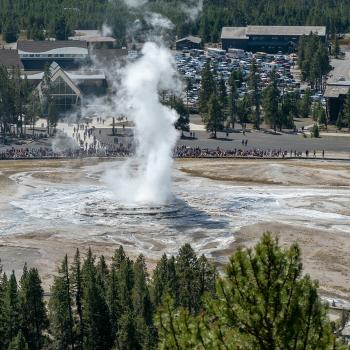
I suspect that more than a few people who’ve reached a certain age, whenever they have to search for the name of an author or a film, wonder suddenly “Is this it? Am I beginning to lose my memory? Will I end up like poor Uncle Ruprecht?”
Alzheimer’s is a terrible disease and a terrifying malady to contemplate.
According to a very interesting article in the December 2018 issue of Discover, 5.7 million Americans currently suffer from Alzheimer’s, with that number expected to increase to nearly 14 million by 2050. While deaths from heart disease decreased 11% between 2000 and 2015, deaths from Alzheimer’s disease have increased 123% during the same period, making it the sixth leading cause of death in the United States. In 2018, the cost to the United States of Alzheimer’s and other forms of dementia was approximately $277 billion, but that cost could rise to as high as $1.1 trillion by 2050.
The trouble is that, thus far, medications to fight Alzheimer’s have been remarkably ineffective. Nearly 99% of the anti-Alzheimer’s drugs that have been tested to this point have failed, and there’s no pharmaceutical solution on the horizon, either.
Now, though, scientists are beginning to think that there may be multiple pathways to the disease, and that, accordingly, there may be multiple ways of slowing its advance or even stopping it.
Which is, in its way, very hopeful news. Because these pathways seem more manageable than an expensive magic pharmaceutical bullet has proven to be.
Roughly half of the risk of contracting the illness comes from a group of factors that, in combination, seem to make any given individual susceptible to it.
These factors include chronic stress, lack of exercise, a deficiency of restorative sleep, insulin resistance and Type 2 diabetes — in 2005, Suzanne de la Monte, a Brown University pathologist, concluded that Alzheimer’s itself is actually a form of diabetes (she calls it Type 3 diabetes), depression, low kidney function, high blood pressure, inflammation from exposure to infections and environmental toxins (such as molds), poor nutrition (e.g., consumption of fat-laden fast foods and too much sugar), smoking, obesity, small strokes, heart disease, concussions, lack of mental stimulation, and insufficient social connection.
Genetic inheritance also plays a role, but it’s just one factor among the others — as are hearing loss and a lack of education.
Fortunately, apart from genetics, virtually all of these risk factors are already familiar and fairly unmysterious. They can be separately and relatively easily addressed and modified. In fact, a major 2017 review in the British medical journal The Lancet argued that addressing them could prevent more than a third of the cases of dementia worldwide.
This Discover article, which I highly recommend, is (in my view) quite encouraging and even, in a sense, inspiring. Alzheimer’s disease, it argues, isn’t necessarily something that will just happen to an unfortunate subset of us, regardless of our efforts to avoid it. There are some things that we can do. Our fate is, at least to some degree, in our own hands. And, to coin a phrase, forewarned is forearmed.











